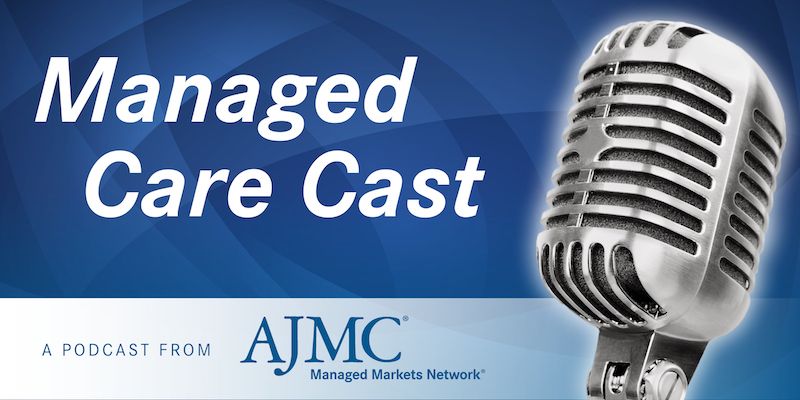Video
Drivers of Health Care Utilization for Uncontrolled Migraine
Migraine specialists consider the drivers of health care utilization for uncontrolled migraine and discuss where individuals go to seek help for management.
Transcript:
Neil Minkoff, MD: How do you look at the utilization of a patient who has uncontrolled migraine and is going through some of the things that we just heard, in terms of not getting the effect or dropping off medication? How do you look at health care utilization and its drivers?
Kevin Stephens, Sr., MD: There are 3 utilization points at which we try to look. One is the office visit. What we try to do is get them to a neurologist. Many times, the primary care physician will try to manage it, but then they may not have the expertise. We try to make sure that the specialist will get them, and they can help the patient to manage their migraines.
The second point is the emergency department. Many times, unfortunately, a migraine happens on a weekend, holiday, or in the middle of the night. It's debilitating, and patients don't have any choice other than to go to the emergency department. We really look at the ED [emergency department] utilization. In the ED, in many cases, physicians order CT [computerized tomography] scans and the likes. That drives up the cost of regular migraine. That’s understandable, because as we get older you have things like strokes and aneurysms, which they have to control for. Then, we look at inpatient policy. Fortunately, many patients with migraines don't have long hospitalization, if any. Most of the time, it's an ED visit. We try to limit the ED visit by getting control using outpatient treatment and being proactive, rather than reacting. Don't wait until the headache gets to be a 10 out of 10 before you seek some type of medical relief.
Neil Minkoff, MD: That raises the question, when should a patient be seeking help for migraine? When should the patient be looking to try to control the uncontrolled migraine before it gets to that level? Dr Dodick?
David W. Dodick, MD: There are a lot of guidelines counseling patients and physicians regarding when a patient should seek help for migraine. Quite simply, it's when a patient is missing time. They're missing time from family, leisure, social activities, or work. You boil it down to this: if they're missing time, there's a problem with their acute treatment. Perhaps it needs to be optimized or the frequency of attacks requires preventive treatment. There's some problem there. If a patient's functional performance and quality of life are being impacted, they need to seek help. Generally speaking, from a preventive treatment standpoint, if an individual is having 1 migraine attack per week, it's time to seek help.
It's not just the headache, as has been alluded to. Sometimes, patients will have symptoms before the pain begins and after the pain has ended. They may be impaired for 3 or 4 days with a migraine attack. But if they're having 1 migraine attack per week, it's time to seek help. If they're having fewer attacks, but migraine is impairing their ability to function, they may need help with acute treatment. The bottom line is that if a patient is missing time, it's time to see a provider.
Neil Minkoff, MD: When you say it's time to see a provider, 1 of the things that comes up from my role having done population health is—and I'm going to speak for Dr Stephens here for a second, as well—where are the patients getting that help? Is that a primary care issue? Is it a neurologic issue? Do they need a headache clinic? How do patients go from 1 center to the next, or get referred for more appropriate treatment?
David W. Dodick, MD: The vast majority of patients are seeking and getting their help in primary care. I'd say that 2 of 3 to 3 of 4 of patients with migraine are getting their care in primary care. About 10% to 15% are getting it in neurologist’s office, and then 5% or less are getting it in the headache specialist’s office.
When I say “primary care,” I mean a family physician, an internist, a pediatrician, an obstetrician, or a gynecologist. There are a variety of different primary care settings. But the majority are getting their treatment in primary care.
To get to a neurologist or a headache specialist, patients can either self-refer, or generally, they're referred by their primary care provider. If a primary care provider is struggling to manage their patient with either acute or preventive therapy, it's time to move that patient on to a neurologist or a headache specialist.
Having said that, there are probably somewhere on the order of 600 board-certified headache specialists in the United States for over 40 million people with migraine. That means there is 1 specialist for every 80,000 or so patients. Unfortunately, it takes patients a while to get in to see these specialists.
Neil Minkoff, MD: I'm glad you didn't make me do the math in my head.
Dr Nahas, is that consistent with your experience in your neck of the woods, in terms of how patients with migraine are distributed between primary and specialty care?
Stephanie J. Nahas, MD, MSEd, FAHS, FAAN: Absolutely. As was alluded to, that’s if they seek care at all. It was striking to learn that 50%, or maybe fewer, of people who meet criteria for a migraine diagnosis even take that first step to see a professional about it. Most of the time, it is in primary care, wherever it happens. Oftentimes, the greatest job is still not being done. We can divide migraine into a number of different subtypes.
Episodic is 1 form that's more common than chronic migraine. That's based purely on the number of days of headaches someone has per month, over the course of 3 months. That line in the sand is at 15 days per month. Does a patient have headache less than half the time, or more than half the time? Someone who has headache less than half the time has the episodic variety.
If they take the steps to go to see a physician, did they get the right diagnosis? Do they actually get the proper treatment? That happens maybe a quarter of the time. With chronic migraine, it's far worse. Fewer than 5% of people with chronic migraine go to the doctor, get a correct diagnosis, and get adequate treatment. That is 1 of the reasons that migraine remains such a huge problem in this country.
Neil Minkoff, MD: Yes. It's not a very rosy picture that's being painted here. Dr Stephens, you're looking at it from a very different perspective, right? Our colleagues here are seeing patients and having them referred. Would you say, from your perspective, that what you're hearing is consistent with your experience, in terms of where patients are being seen and the level of care they're getting?
Kevin Stephens, Sr., MD: Yes, absolutely. As you mentioned, the headache specialists are few and far between, and they're overloaded. That's a bottleneck in the system. Again, people affected by this are the ones who go to primary care physicians. Many times, those are obstetricians, gynecologists, and family practitioners.
It's very important that we try to educate and support those providers, because we don't have the capacity to go much further upstream. Yes, we've seen the exact same thing that was articulated earlier.
Newsletter
Stay ahead of policy, cost, and value—subscribe to AJMC for expert insights at the intersection of clinical care and health economics.




